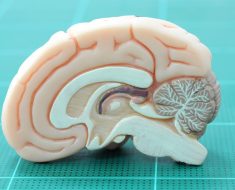- Facial coverings worn during the COVID-19 pandemic make communication more difficult for people with hearing impairments.
- People with hearing difficulties have trouble reading lips and recognizing facial expressions with masks in place.
- Experts say people with hearing difficulties should be self-advocates and communicate their barriers to others.
- They ask people to be patient and speak slower, louder, and lower when talking with a person with hearing difficulties.
Melanie Baugher was born deaf and has only recovered a minimal amount of hearing over time.
Since then, the Michigan resident has used hearing aids, lip reading, and social cues to communicate effectively in the world.
It’s been working well until COVID-19 and the need for facial coverings such as masks came along.
“I knew it was going to be bad,” Baugher told Healthline. “With the masks, I cannot tell if you are joking, mad, or serious. So what do I do? I call it my ‘smile and nod.’ I just smile, nod, and move on.”
It’s also affected the flow of Baugher’s daily life.
“Now I only go grocery shopping with someone with me,” she said. “I knew it was going to be hard, but this is a whole new level.”
The hearing impaired community is facing that struggle across the board.
The people with hearing difficulties interviewed by Healthline wanted to make it clear they support everyone wearing masks during the pandemic and don’t want that recommendation to change.
That means COVID-19 leaves them with the challenge of trying to hear without the usual tools they depend on.
Debbie Abel, AuD, president of the Academy of Doctors of Audiology, told Healthline that the communication barriers that come with masks and other COVID-19 restrictions such as physical distancing weren’t unexpected.
“Even normal hearing people use lip reading and facial cues to understand someone,” Abel told Healthline.
“When you add the barriers out there now, like Plexiglas, which you lose sound from the barrier, and masks that block sound but also lips and facial expressions, there’s a lot of challenge out there for the hearing impaired,” she said.
Brittany Carroll, a young adult living and working in Greensboro, North Carolina, knows this firsthand.
Having grown up with severe hearing loss from ear infections and central auditory processing disorder, Carroll spent her childhood developing the skills she needed to get by.
“Here in the South, everyone shouts, so it’s a bit easier,” she told Healthline. “But I still had to build some strong lip reading skills.”
Now, she said, she’s struggling to find new ways to understand those she interacts with.
Patty Tan is a student doctor of audiology in Oregon and also a person with hearing loss. Through a lifetime of therapy lessons in lip reading, hearing aid changes, and other tools, she’s found a way to get by.
The situation today, she said, is a huge challenge.
“It wasn’t a shock,” Tan told Healthline. “I think I knew how bad it was going to be.”
Tan finds the same challenges as others and more. Since she’s a student, there have been countless Zoom calls. And while one may think that a Zoom call is great because you can control the volume, Tan says something vital is missing: nonverbal cues.
“I look for things like hand gestures and body posture to help me know what a person is saying and how,” she said. “That’s restricted in Zoom (and any other online video communication tool) because you’re basically inside of a box and you have a limited range of the motion people can see.”
What a hearing impaired person can do
Carroll has been adapting her actions based on times in the past she had trouble hearing, as well as on trial and error.
“Years of hearing therapy have taught me a lot,” she said.
First, she tries to always look whomever she is speaking with directly in the eye.
“It helps,” she said, “but if they are talking quietly and I cannot see their mouth, it only helps a little.”
Tan agrees, adding that facing a person can also help remove some of what is a big challenge for the hearing impaired: background noise.
And whenever possible, Tan said, speak one-on-one rather than to a circle of people.
“It’s just better for focusing and actually hearing,” she said.
Carroll has also taken to backing up 10 feet from the person speaking and saying, “Are you comfortable removing your mask for a moment so I can hear you?”
She doesn’t like making this request, but says it’s a necessity.
“It’s an awkward thing in an awkward time,” Carroll said.
Abel has been counseling her clients to consider wearing a mask with “hearing impaired” written on it to help people know you might need extra help.
Like Carroll, she suggests looking a person in the eye and using their name, even if it’s from a name tag.
“This helps make sure that you have their attention,” she said.
Abel also suggests asking the speaker to not just speak louder but lower.
“Lower, slower, and louder. That’s the key,” she said. “When people are asked to speak louder, they almost automatically speak in a higher pitch. Most people with hearing loss have high-frequency hearing loss, so asking someone to speak louder and lower helps.”
Abel has another tip: Use a connector to hold the mask across the back of your head rather than hook it on your ears. Ear hooks, she said, have been a major trouble spot in mask wearing for the hearing impaired.
Why?
“Hearing aids,” she said. “They’re getting lost left and right.”
By avoiding pulling at your ears for the mask, you can prevent that.
Tan agreed.
“People who wear hearing aids and glasses, there’s a lot going on back there behind the ears,” she said. “There are a lot of lost hearing aids lately.”
What the rest of us can do
Tan has worn hearing aids since she was 5 years old and wants people to understand that is not a total solution.
“It’s important for people to know that hearing aids are not a cure for hearing loss but just a help,” she said.
“Lip reading is something I’ve relied heavily on my entire life,” she added. “It’s not a natural thing. It’s a skill you need to learn. A therapist taught me early on.”
She suggests that any person with hearing loss who is struggling see an audiologist for tips as well as to help them brush up on skills.
“We really need them all out there now,” she said.
Tan also suggests, when you can, bringing along a frequent communication partner, as Baugher does, for places you may expect to be challenging, such as supermarkets.
It’s also safe to type out something on your phone and show it to the person you’re trying to hear, helping them realize they could do the same.
Abel said that clear masks are available on the market and at audiology offices.
Patience and self-advocacy
Baugher asked that people have patience when communicating with someone with hearing loss.
“Don’t say ‘never mind’ and just walk away,” she said. “It’s very dismissive and makes us feel less important.”
Which brings up Tan’s top tip: Be your own best advocate.
That’s a sticking point in the hearing world.
“I hate asking people to speak up, or move in a way or whatever I need to hear them,” said Carroll. “I really hate it. It’s just one of those things.”
“It’s really anxiety-provoking,” said Tan. “Across the board, anyone with hearing loss will tell you they absolutely hate that.
“Now? Every single situation feels like that,” she said. “It’s crazy.”
The solution? Lean into it.
“You have to be your own best advocate. If you don’t do it, who will?” Tan said. “These are unusual times. The best thing we can do as a community is step up and let people know what we need. It’s worth it when you can hear. It really is.”

Source: Read Full Article





